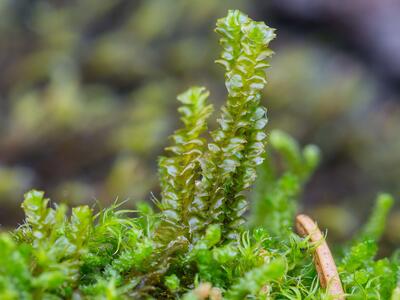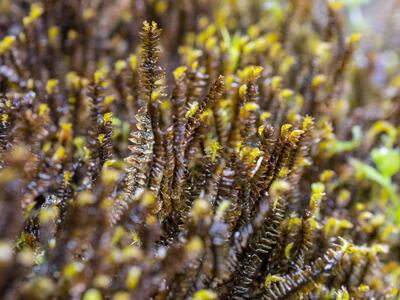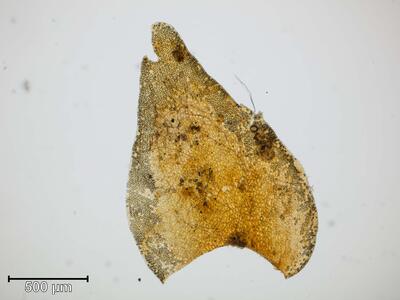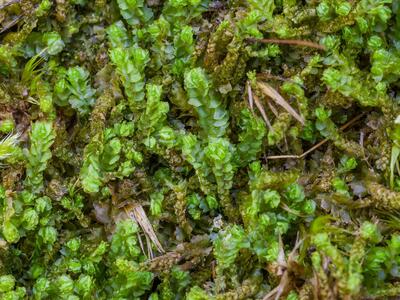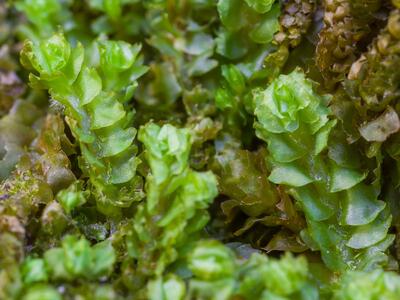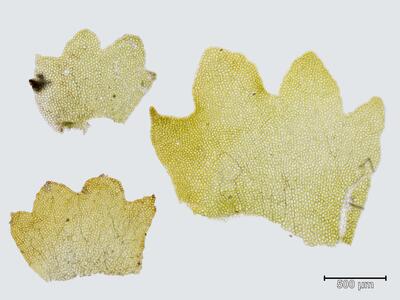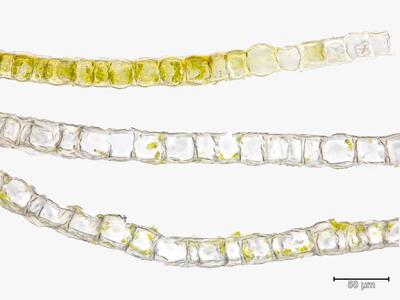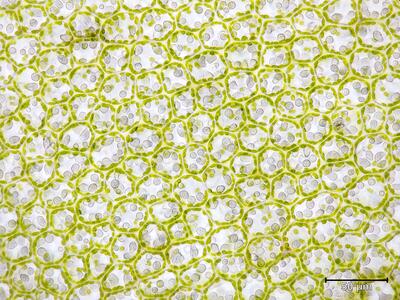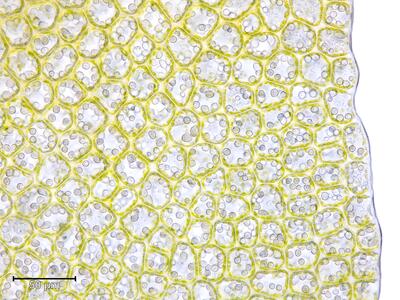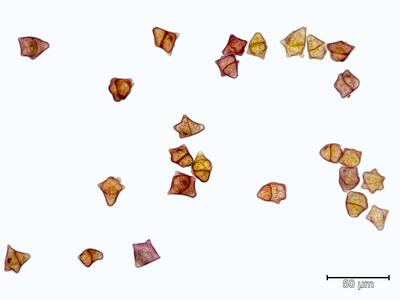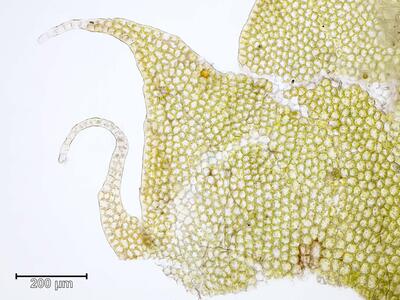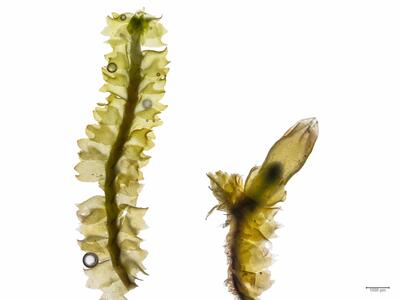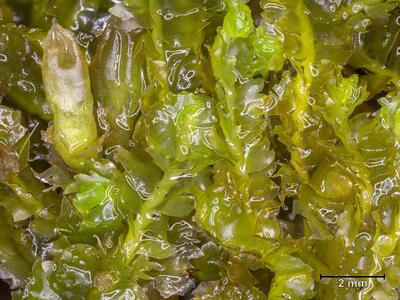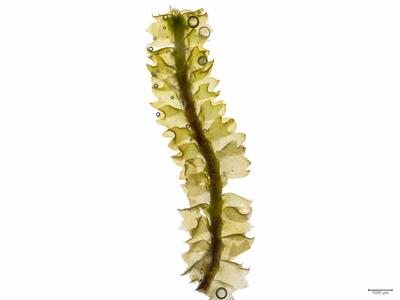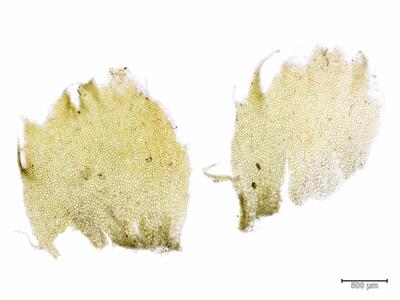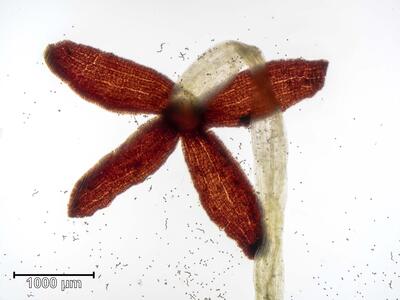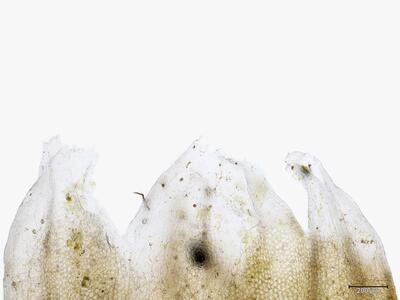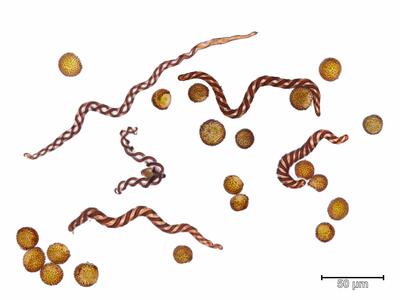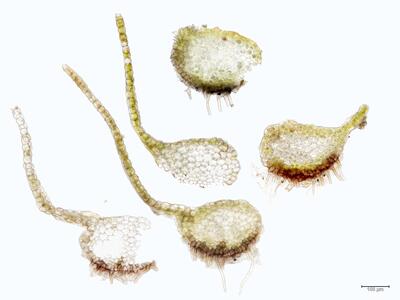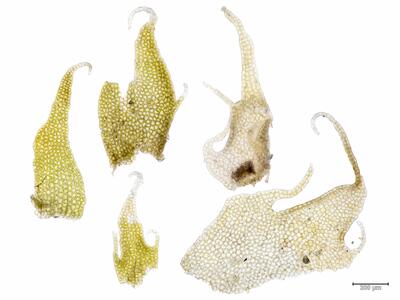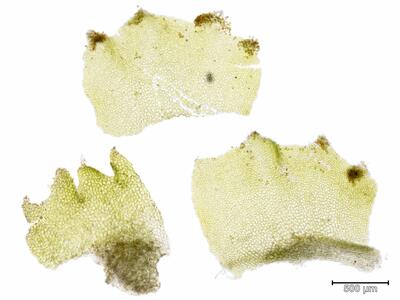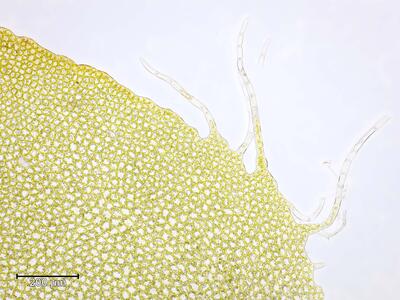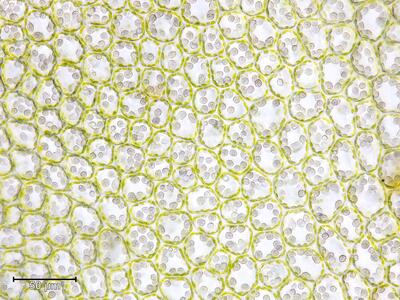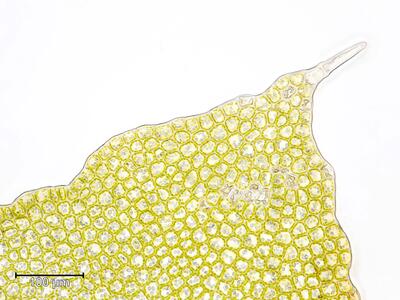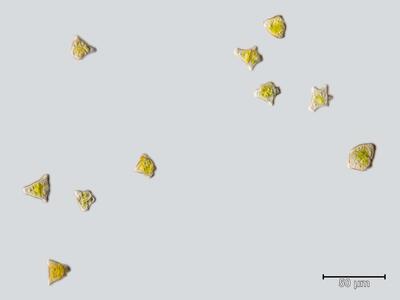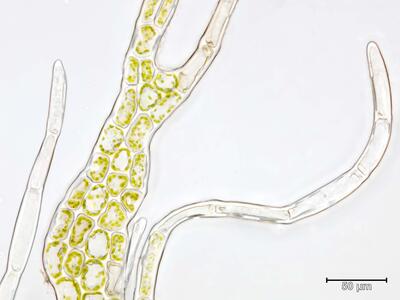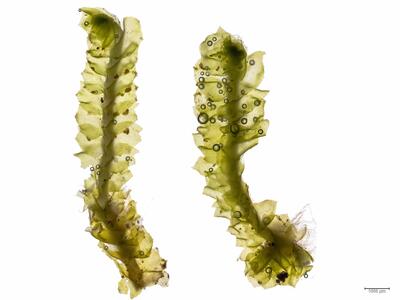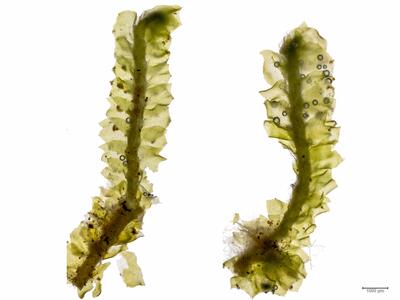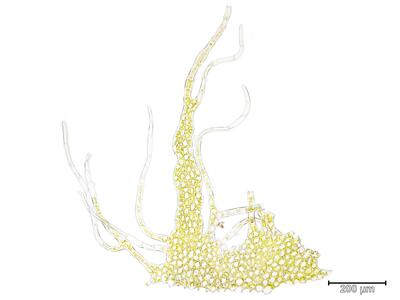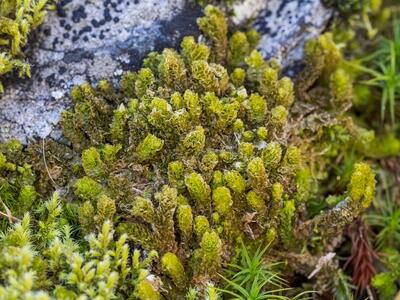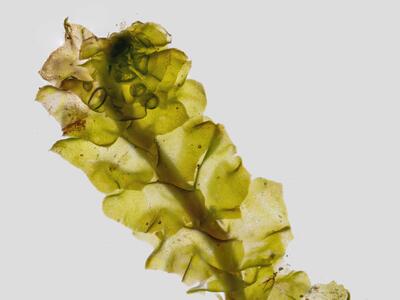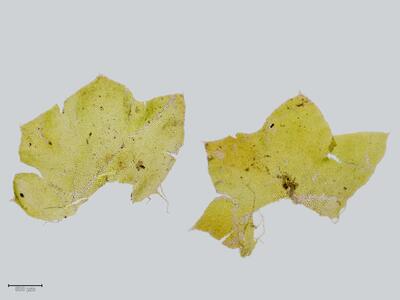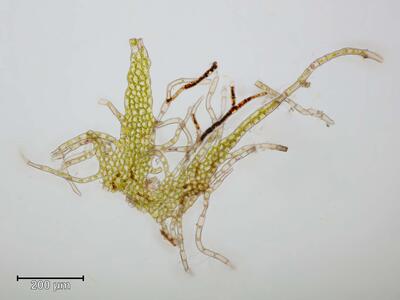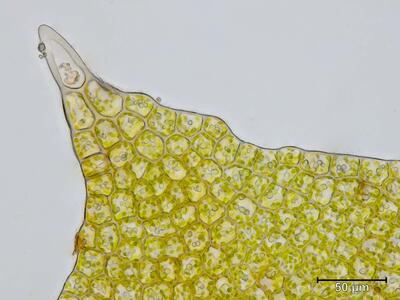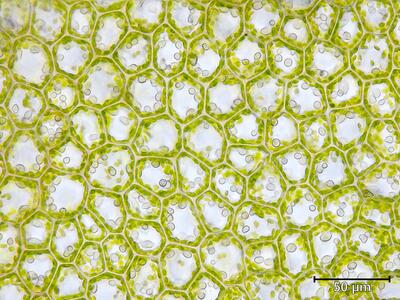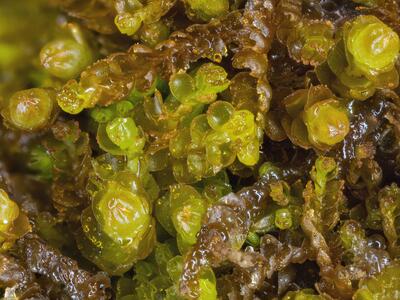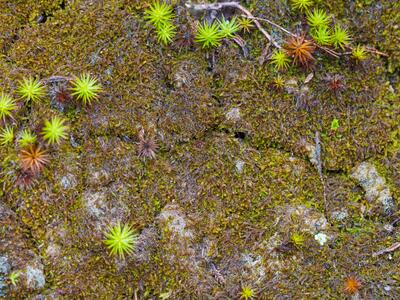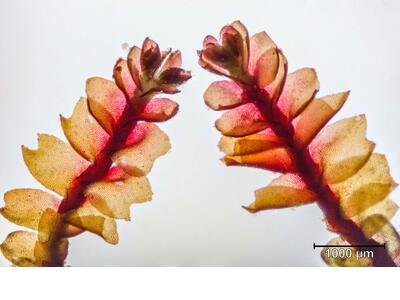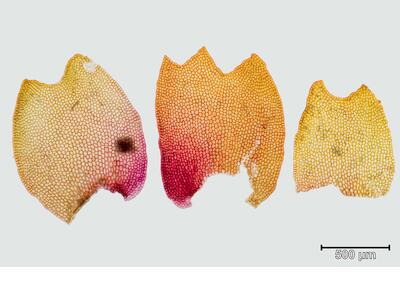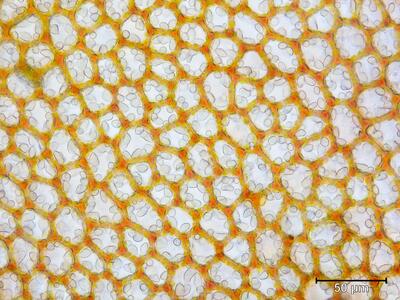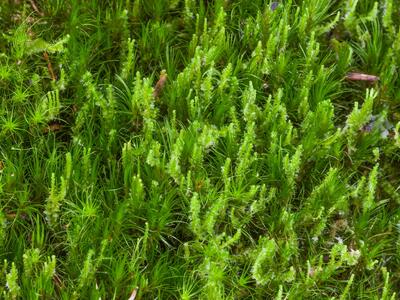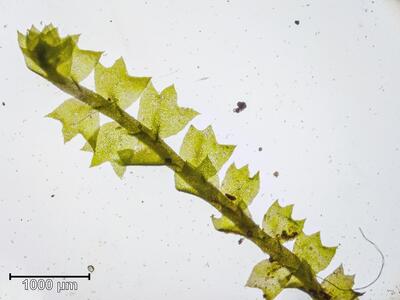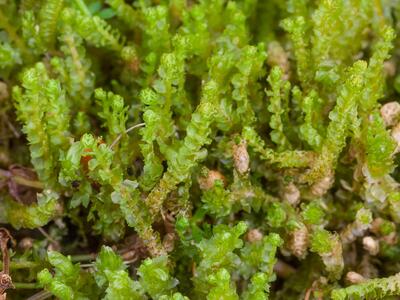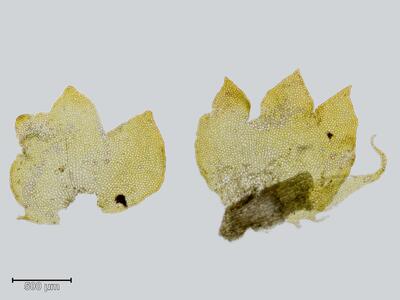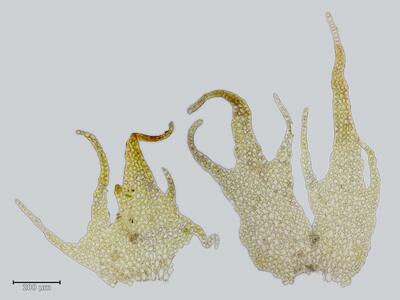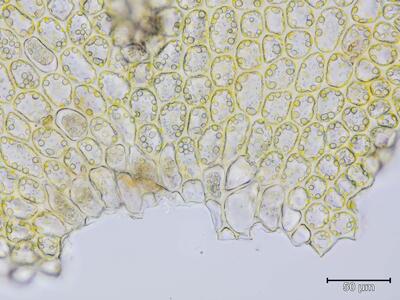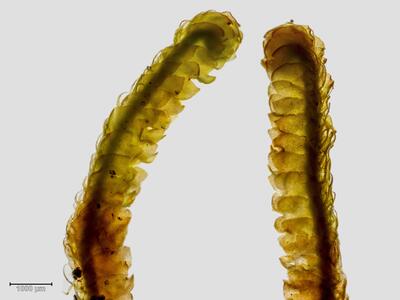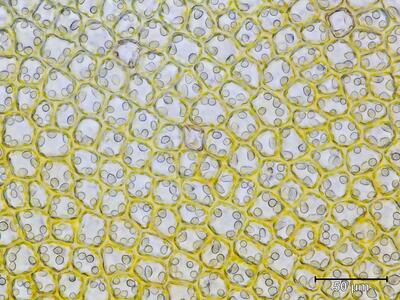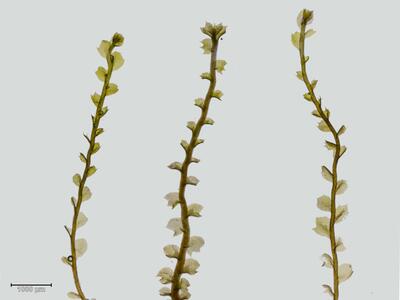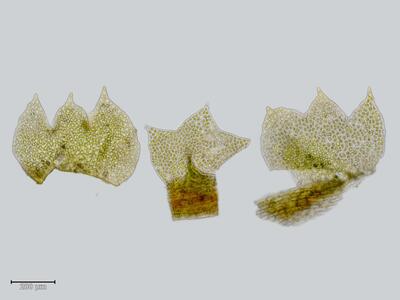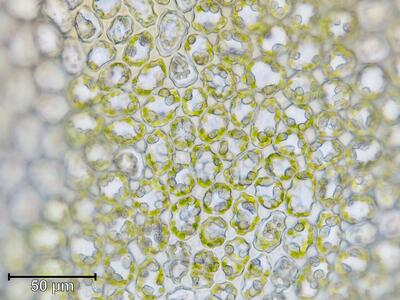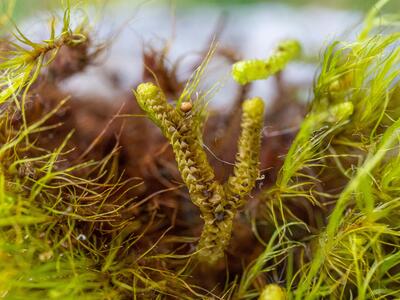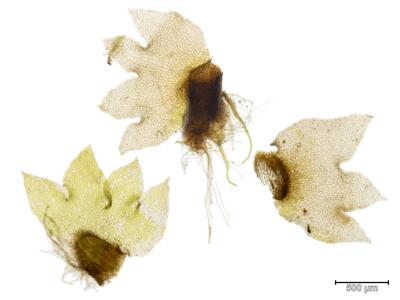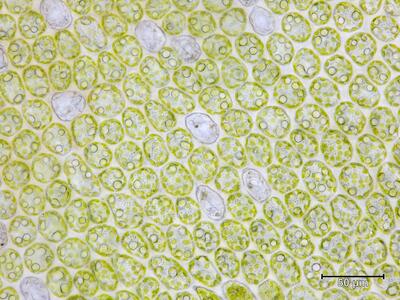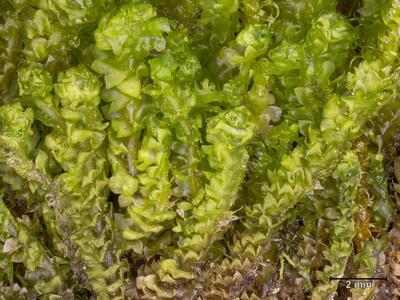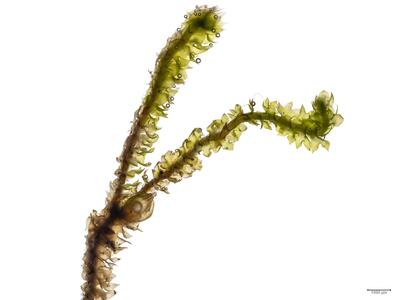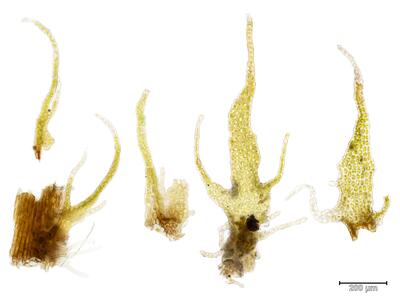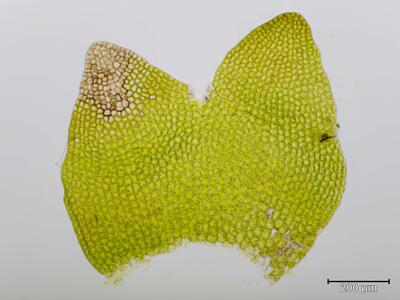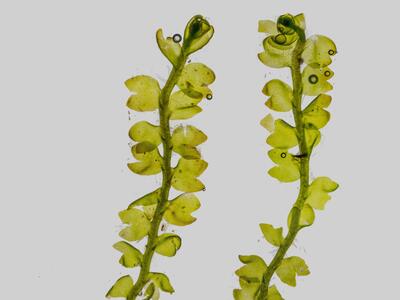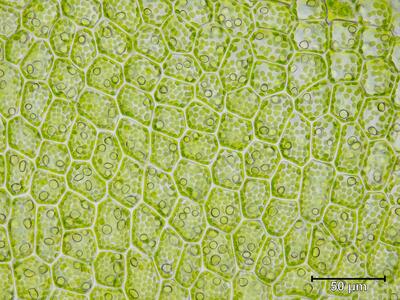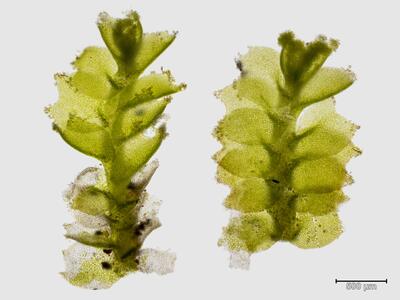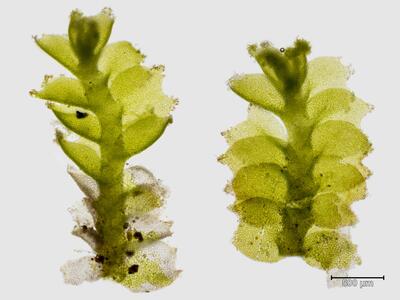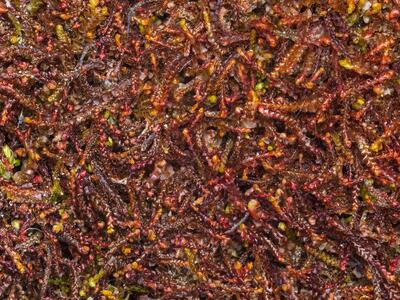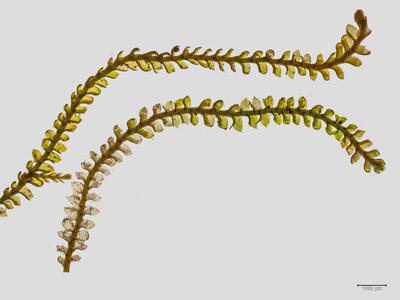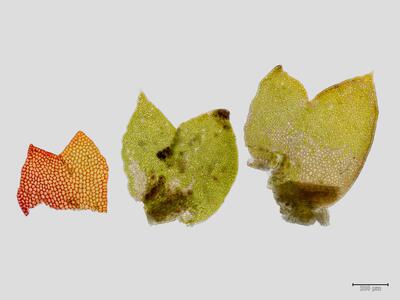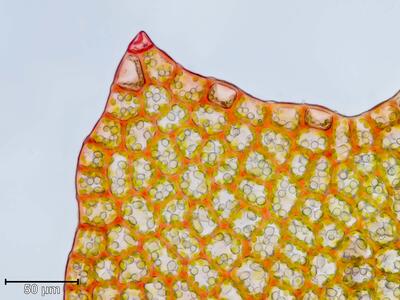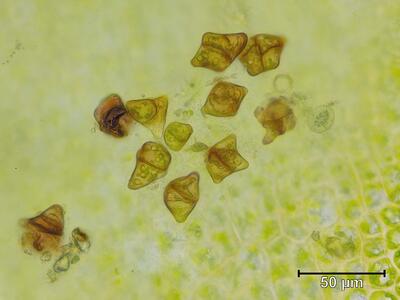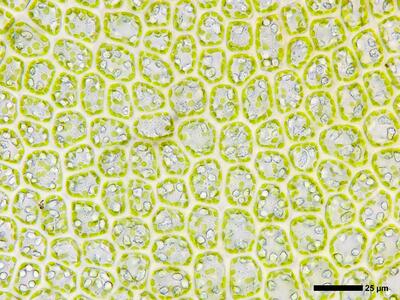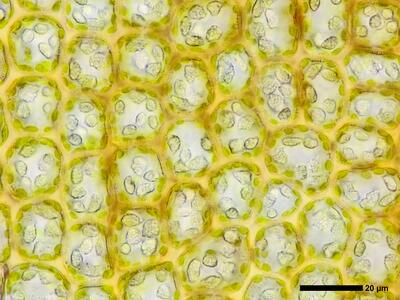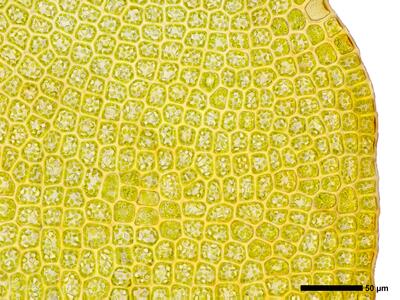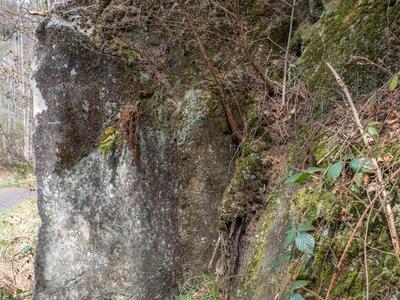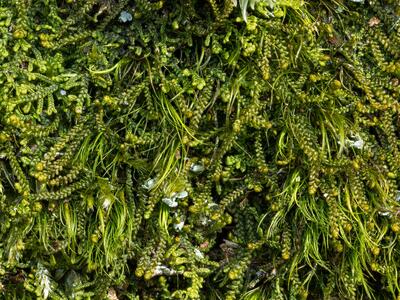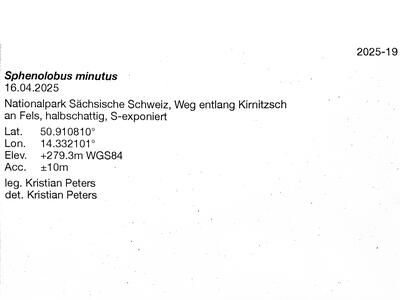Korseby Online - Anastrophyllaceae
Anastrophyllaceae
Index
- Sekt. Anastrepta
- Anastrepta orcadensis (Echtes Orkney-Moos)
- Sekt. Anastrophyllum
- TODO: Anastrophyllum alpinum
- TODO: Anastrophyllum assimile
- Anastrophyllum donnianum (Donners Kahnblattmoos)
- Anastrophyllum hellerianum
- TODO: Crossocalyx hellerianus (Syn. Anastrophyllum hellerianum)
- TODO: Anastrophyllum joergensenii
- TODO: Anastrophyllum michauxii
- Anastrophyllum cavifolium
- TODO: Orthocaulis cavifolius (Syn. Anastrophyllum cavifolium)
- Sekt. Barbilophozia
- Barbilophozia barbata (Gewöhnliches Bartspitzmoos)
- Barbilophozia hatcheri (Hatchers Bartspitzmoos)
- Barbilophozia lycopodioides
- Barbilophozia lycopodioides (Bärlappähnliches Bartspitzmoos)
- TODO: Barbilophozia rubescens
- Lophozia sudetica
- Barbilophozia sudetica (Syn. Lophozia sudetica) (Sudeten-Spitzmoos Spitzmoos)
- Barbilophozia attenuata
- Neoorthocaulis attenuatus (Syn. Barbilophozia attenuata)
- Barbilophozia attenuata (Schlankes Bartspitzmoos)
- Barbilophozia binsteadii
- TODO: Neoorthocaulis binsteadii (Syn. Barbilophozia binsteadii)
- Barbilophozia floerkei
- Neoorthocaulis floerkei (Syn. Barbilophozia floerkei)
- Barbilophozia floerkei (Floerkes Bartspitzmoos)
- Barbilophozia hyperboreus
- TODO: Neoorthocaulis hyperboreus (Syn. Barbilophozia hyperboreus)
- Barbilophozia atlantica
- Orthocaulis atlanticus (Syn. Barbilophozia atlantica)
- Barbilophozia atlantica (Atlantisches Bartspitzmoos)
- Barbilophozia kunzeana
- TODO: Schljakovia kunzeana (Barbilophozia kunzeana)
- Barbilophozia quadriloba
- TODO: Schljakovianthus quadrilobus (Barbilophozia quadriloba) (Vierlappiges Bartspitzmoos)
- Sekt. Jamesoniella
- Jamesoniella undulifolia
- TODO: Biantheridion undulifolium (Syn. Jamesoniella undulifolia)
- Sekt. Gymnocolea
- TODO: Gymnocolea borealis
- TODO: Gymnocolea fascinifera
- Gymnocolea inflata (Aufgeblasenes Nacktkelchmoos)
- TODO: Gymnocolea inflata subsp. inflata
- TODO: Gymnocolea inflata subsp. acutiloba
- Sekt. Isopaches
- TODO: Isopaches alboviridis
- Lophozia bicrenata
- Isopaches bicrenatus (Syn. Lophozia bicrenata) (Zedernholz-Spitzmoos)
- TODO: Isopaches decolorans
- Sekt. Sphenolobus
- TODO: Schizophyllopsis sphenoloboides
- TODO: Sphenolobopsis pearsonii
- Sphenolobus minutus (Syn. Anastrophyllum minutum)
(Schlankes Kahnblattmoos) - TODO: Sphenolobus saxicola
- Sekt. Tetralophozia
- TODO: Tetralophozia filiformis
- TODO: Tetralophozia setiformis
Sekt. Anastrepta
Anastrepta orcadensis (Echtes Orkney-Moos)
Sekt. Anastrophyllum
TODO: Anastrophyllum alpinum
TODO: Anastrophyllum assimile
Anastrophyllum donnianum (Donners Kahnblattmoos)
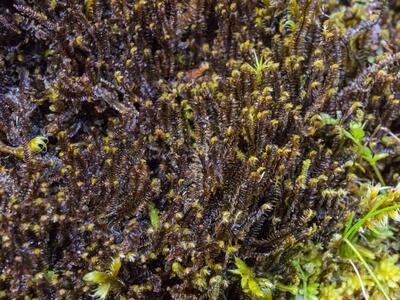 |
|
Anastrophyllum donnianum
|
TODO: Crossocalyx hellerianus (Syn. Anastrophyllum hellerianum)
TODO: Anastrophyllum joergensenii
TODO: Anastrophyllum michauxii
TODO: Orthocaulis cavifolius (Syn. Anastrophyllum cavifolium)
Sekt. Barbilophozia
Barbilophozia barbata (Gewöhnliches Bartspitzmoos)
Barbilophozia hatcheri (Hatchers Bartspitzmoos)
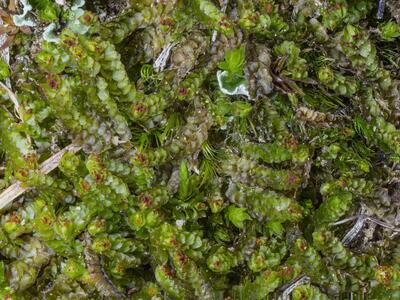 |
|
Barbilophozia hatcheri
|
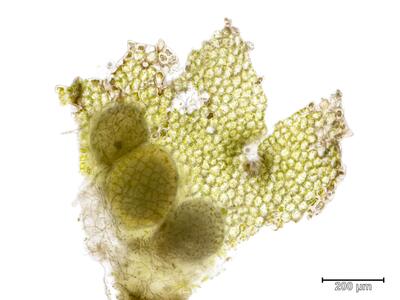 |
|
Barbilophozia hatcheri
|
Barbilophozia lycopodioides
Barbilophozia lycopodioides (Bärlappähnliches Bartspitzmoos)
TODO: Barbilophozia rubescens
Barbilophozia sudetica (Syn. Lophozia sudetica) (Sudeten-Spitzmoos Spitzmoos)
Neoorthocaulis attenuatus (Syn. Barbilophozia attenuata)
Barbilophozia attenuata (Schlankes Bartspitzmoos)
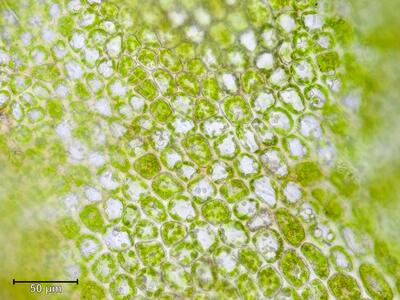
B. attenuata Laminazellen |
TODO: Neoorthocaulis binsteadii (Syn. Barbilophozia binsteadii)
Neoorthocaulis floerkei (Syn. Barbilophozia floerkei)
Barbilophozia floerkei (Floerkes Bartspitzmoos)
TODO: Neoorthocaulis hyperboreus (Syn. Barbilophozia hyperboreus)
Orthocaulis atlanticus (Syn. Barbilophozia atlantica)
Barbilophozia atlantica (Atlantisches Bartspitzmoos)
TODO: Schljakovia kunzeana (Barbilophozia kunzeana)
TODO: Schljakovianthus quadrilobus (Barbilophozia quadriloba) (Vierlappiges Bartspitzmoos)
Fotos zu Herbarbeleg: GJO 0101022.
Sekt. Jamesoniella
TODO: Biantheridion undulifolium (Syn. Jamesoniella undulifolia)
Sekt. Gymnocolea
TODO: Gymnocolea borealis
TODO: Gymnocolea fascinifera
Gymnocolea inflata (Aufgeblasenes Nacktkelchmoos)
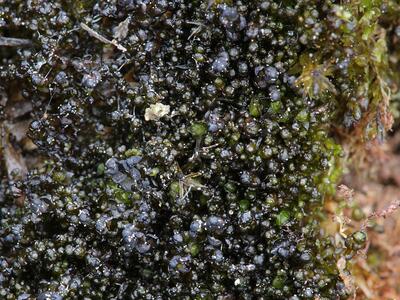 |
|
Gymnocolea inflata
|
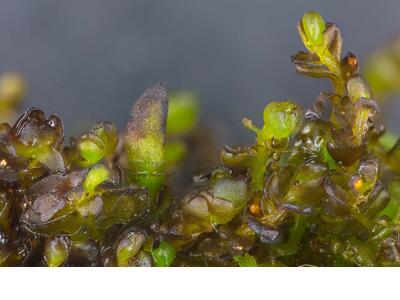 |
|
Gymnocolea inflata Perianth
|
Gymnocolea inflata bildet an trockenen Standorten braungrüne bis schwarzbraune Rasen, an feuchten Stellen dagegen eher lockere, dunkelgrüne Bestände zwischen anderen Moosen. Einzelne Pflanzen werden etwa 1,5 mm breit und bis 3 cm lang und wachsen niederliegend zum Boden. Eine vegetative Vermehrung durch leicht abbrechende, sterile Sprosse kommt häufig vor. Die locker bis dicht gestellten, ganzrandigen, deutlich hohlen, nicht herablaufenden Flankenblätter sind ausgebreitet abstehend und eiförmig geformt. An der Spitze sind sie zu etwa 1/3 spitzwinklig eingeschnitten, so dass 2 stumpfe, ungleich große Flankenblatt-Lappen entstehen. Die gleichmäßig großen, 4- bis 6-eckigen Flankenblattzellen sind im Durchmesser etwa 25 bis 35 µm groß. Unterblätter sind gewöhnlich nicht vorhanden. Die dicht ährenförmigen männlichen Gametangienstände bilden ein keulenförmiges Perianth, das weit aus den Hüllblättern herausragt. Es werden gelbrote, körnige Sporen gebildet, die etwa 17 µm groß sind und gewöhnlich im Spätherbst gebildet werden.
Verwechslungsgefahr besteht an feuchten Standorten mit Cladopodiella fluitans oder mit Marsupella emarginata.
Vorkommen
Gymnocolea inflata besiedelt nährstoffarme, kalkfreie, trockene bis nasse, schattige bis sonnige Stellen in oligotrophen Hoch-, Übergangs- oder Quellmooren, ist aber auch in Wassergräben, Schlänken, an Gewässerrändern im Verlandungsbereich, oder in feuchten, sandigen Heidegesellschaften auf Sand, Lehm, Kies oder Torf verbreitet. Es bevorzugt dabei stets relativ niedrige, saure pH-Werte. In Hochmooren ist es zusammen mit Cephalozia bicuspidata, Cladopodiella fluitans, Sphagnum cuspidatum, Sphagnum magellanicum, Sphagnum rubellum oder Rhynchospora alba und Carex limosa vergesellschaftet. In Feuchtheiden kommt es oft in Reinbeständen zwischen Calluna vulgaris vor. Das Lebermoos ist in den gemäßigten Klimazonen über die gesamte Nord-Hemisphäre verbreitet und kommt sporadisch zerstreut vor.
TODO: Gymnocolea inflata subsp. inflata
TODO: Gymnocolea inflata subsp. acutiloba
Sekt. Isopaches
TODO: Isopaches alboviridis
Isopaches bicrenatus (Syn. Lophozia bicrenata) (Zedernholz-Spitzmoos)
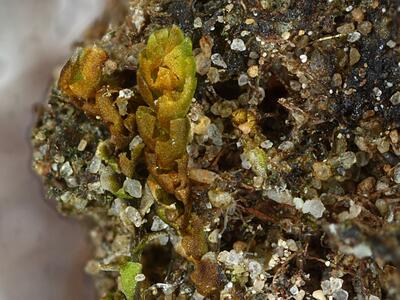 |
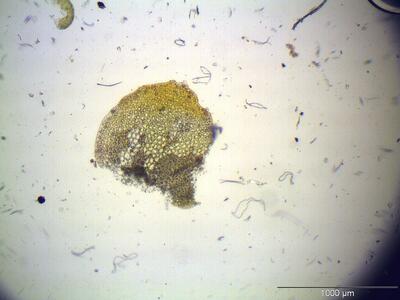 |
|
Isopaches bicrenatus
Flankenblatt (40x) |
Isopaches bicrenatus (Syn. Lophozia bicrenata) bildet gewöhnlich kleine gelblich-grüne bis rötlich-braune Flecken oder Überzüge. Einzelne Pflanzen sind parözisch, niederliegend, dem Substrat oft angewachsen, bis 1 cm lang und etwa 1 mm breit. Sie riechen beim Zerreiben nach Zedernholz. Das Stämmchen ist dicht mit langen Rhizoiden besetzt. Die rundlichen, etwa so lang wie breiten, 0,5 mm großen Flankenblätter sind fast quer angewachsen und bis zu 1/3 in zwei spitze oder stumpfliche Lappen geteilt. Die derbwandigen Flankenblattzellen werden im Durchschnitt etwa 20 bis 40 µm groß und weisen 6 bis 12 Ölkörper auf. Unterblätter werden nicht ausgebildet. Perianthien und Sporogone werden relativ häufig gebildet. Die männlichen Tragblätter sind am Rand gesägt. Die Mündung des birnförmigen, etwas gefalteten Perianths ist gewimpert. Auch gelblich-braune, etwa 20 bis 30 µm große Brutkörper werden an sterilen Trieben häufig gebildet.
Verwechslungsgefahr besteht mit Lophozia excisa, welches jedoch größer ist und nicht so dicke Zellwände hat.
Vorkommen
Isopaches bicrenatus besiedelt stark sonnenexponierte bis schwach schattige, trockene bis mäßig frische, kalkarme, saure, humus-arme, sandig-lehmige, oder sandige Rohböden. Typische Begleitmoose sind Dicranella heteromalla, Diphyscium foliosum oder Polytrichum juniperinum. Es ist in den gemäßigten Klimazonen über die gesamte Nord-Hemisphäre verbreitet. Es ist durch seine recht hohen Standortsansprüche relativ selten, aber nicht gefährdet.
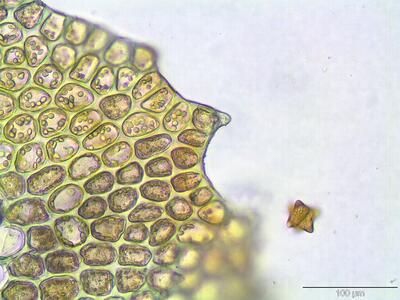
Isopaches bicrenatus Flankenblattzipfel (250x) | 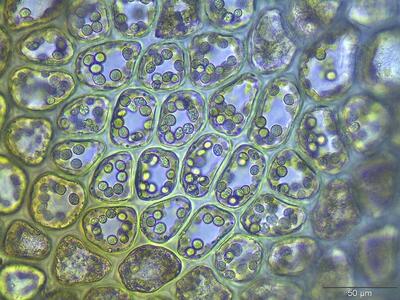
Isopaches bicrenatus Flankenblattzellen (400x) | 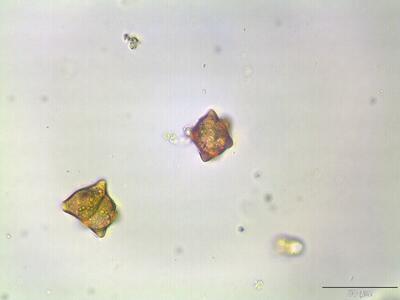
Isopaches bicrenatus Brutkörper (400x) |
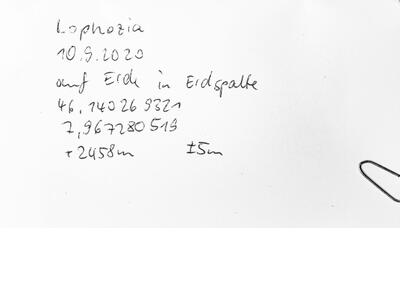 |
|
Isopaches bicrenatus
Herbarbeleg |
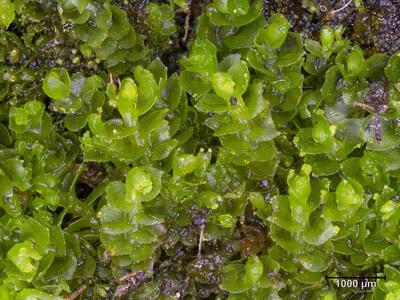
Isopaches bicrenatus Habitus |
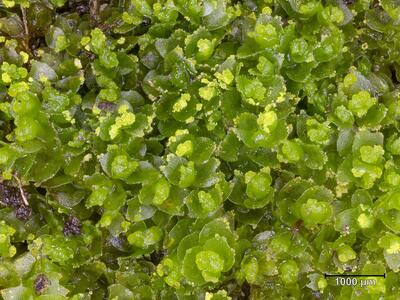
Isopaches bicrenatus Habitus | 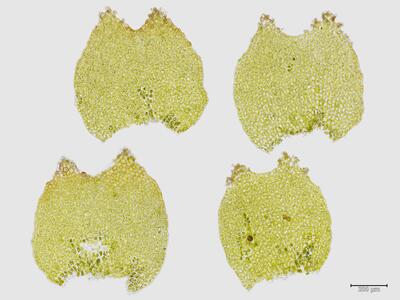
Isopaches bicrenatus Flankenblatt | 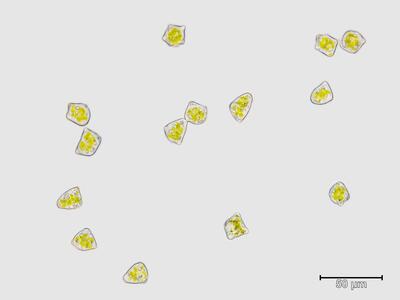
Isopaches bicrenatus Brutgemmen |
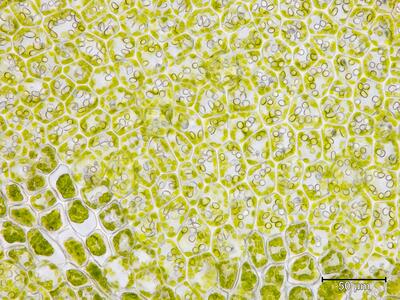
Isopaches bicrenatus Flankenblatt Blattbasis | 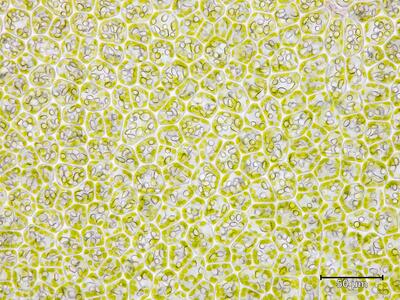
Isopaches bicrenatus Flankenblatt Blattmitte | 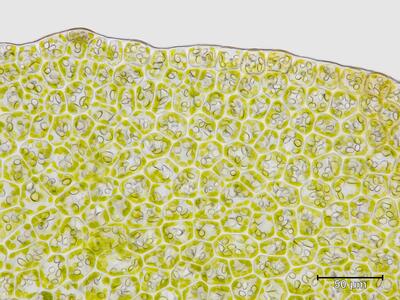
Isopaches bicrenatus Flankenblatt Blattrand |
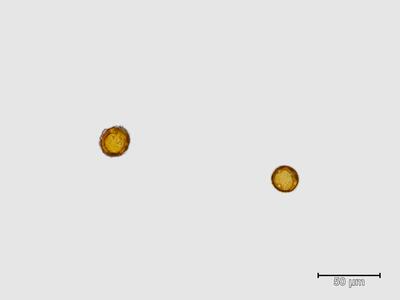
Isopaches bicrenatus Sporen | 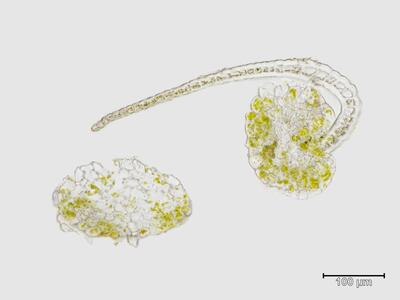
Isopaches bicrenatus Stämmchen (Querschnitt) |
TODO: Isopaches decolorans
Sekt. Sphenolobus
TODO: Schizophyllopsis sphenoloboides
TODO: Sphenolobopsis pearsonii
Sphenolobus minutus (Syn. Anastrophyllum minutum)
(Schlankes Kahnblattmoos)
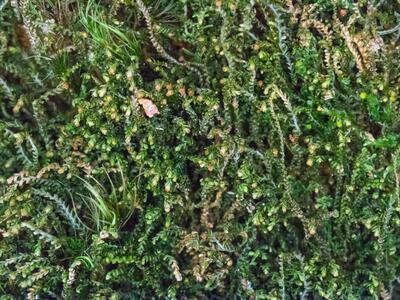 |
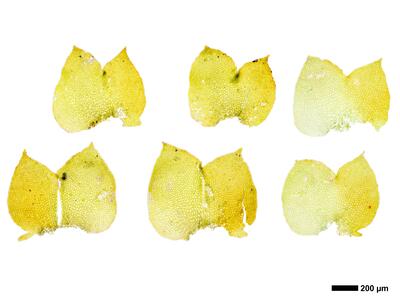 |
